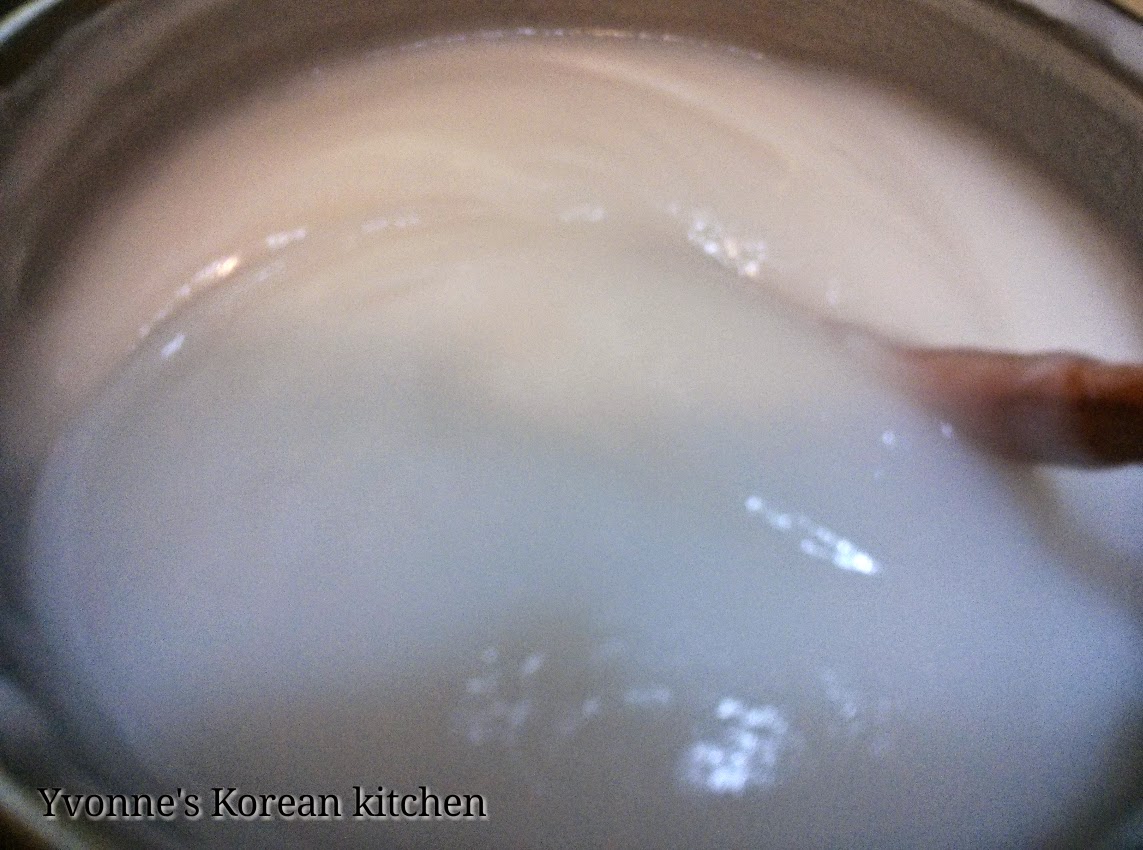Pogi-Kimchi/Tongbaechu-Kimchi (Traditional Napa Cabbage Kimchi)
Generally, November the beginning of winter is the kimchi making season in Korea. It's said that the napa cabbage (baechu) during the end of the year is big and sweet, which is really suitable to make baechu kimchi. Families make about twenty to hundreds of pogi kimchi so that it can last them through the long winter. This process is called "kimjang".
Tongbaechu kimchi is the most general and basic kimchi in Korea. There are slightly difference in the ingredients of making kimchi. It's depends on the household. Some household use salted shrimp paste (Saewujeot), but some will use other seafood like fresh oyster or squid. Today I am going to use the most common one - salted shrimp paste and fish sauce. My mother in law adds fresh oyster in her kimchi but it's quite hard to get fresh oyster here...so I will skip...
It's quite labour intensive in making kimchi but it's all worthwhile! It's a great food rich with nutritions and it's the main ingredients in making yummylicious Korean food like kimchi jjigae, kimchi fried rice, kimchi jeon and etc. Have a try! :)
Ingredients:
4 Baechu (Napa cabbage) - about 8.5kg
12 stalk Spring onion
35 stalk Chives
5 cups of Radish (cut into stripes)
2 cups of carrot (cut into stripes)
10 cups of Coarse sea salt
6 liter water
Paste (Marinating sauce)
5 cups of water
1 cup of sweet rice flour (or glutinous rice flour)
1 cup Sugar
35 piece of Garlic
2 Onion (big size)
3 Apple (small) or 1 big pear
1 piece of Ginger (Thumb size)
1 cup Saewujeot (salted shrimp paste)
1 & 1/2 cup Fish sauce
1 & 1/2 cup Gochugaru (Korean chilli powder)
Step by step photos:
- Trim and remove any bad parts of the napa cabbage.
- Divide and cut the napa cabbage into quarter (length wise).
- Prepare a large basin. Dissolve 6 cups of salt into 6 liter of water (*Tip: 1 cup of salt = 1 liter of water).
- Start from the outermost leaf, sprinkle salt generously over the thick inner part of each leaves. Repeat for each cabbage and let them soak in the salt water for 6 hours. Turn over and rotate the bottom cabbage over to the top every 2 hours.
- When the white part is easily bendable, it's ready to be washed. Wash thoroughly about 3 times over running water to remove the excess salt and dirt.
- Prepare a strainer and place the washed cabbages on it to drain off excess water. This may take another 2 to 3 hours or you can drain the water off by squezzing the cabbage.
- While waiting for draining the excess water, prepare the marinating sauce. Prepare a pot, put in 5 cups of water and 1 cup of sweet rice flour. Keep stirring over low heat. This process takes about 8-10 minutes. When it starts to bubble and thickens, add in 1 cup of sugar. Keep stirring for another 1 minute. Off the heat, set aside and let it cool.
- Cut the radish, carrot, chives and spring onion into stripes.
- Blend/grind garlic, onion, ginger, apple, salted shrimp paste, fish sauce and gochugaru.
- Pour the blended kimchi paste into a big basin, add in carrot, radish, spring onion and chives stripes. Add the sweet rice paste and mix well.
- Spread some kimchi paste over each cabbage leaf. When every leaf is covered with kimchi paste, bend and wrap the leaves part towards the stem part and place it in a container. After all kimchi has been put into the container, press down hard to release air pockets.
- Leave it to room temperature overnight and store in the fridge.
- It will take about 2 weeks for the kimchi to develop full flavour depending on the temperature (cold temperature will slow down the fermenting process and your kimchi won't become sour too fast).
*You can use an egg to check the saltiness level of your salt water. After dissolve salt in water, place an egg in the basin. If the egg floats, it's salty enough~ :)


















No comments:
Post a Comment